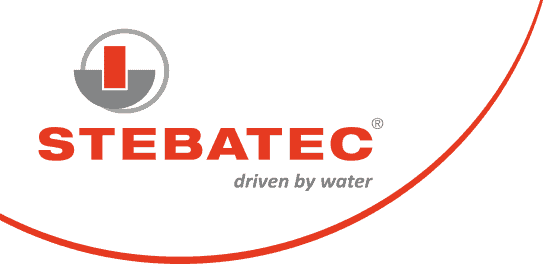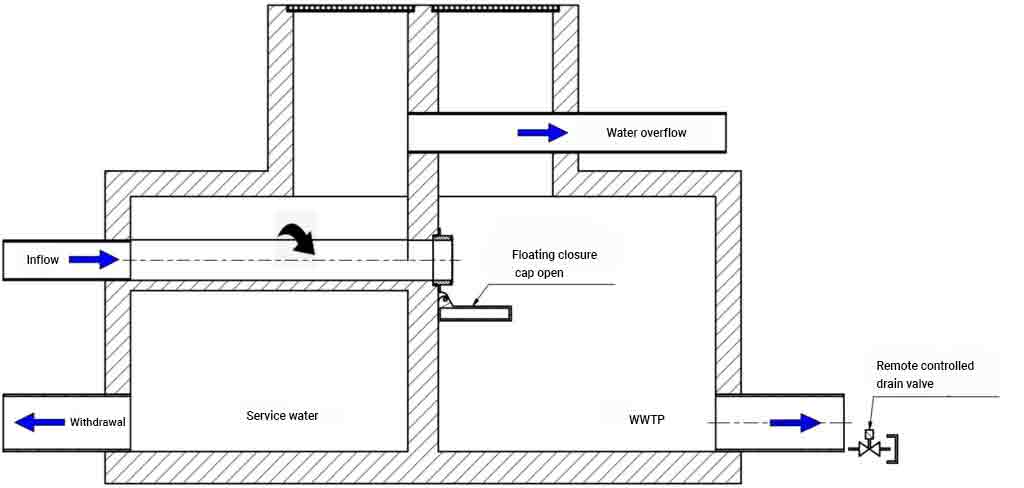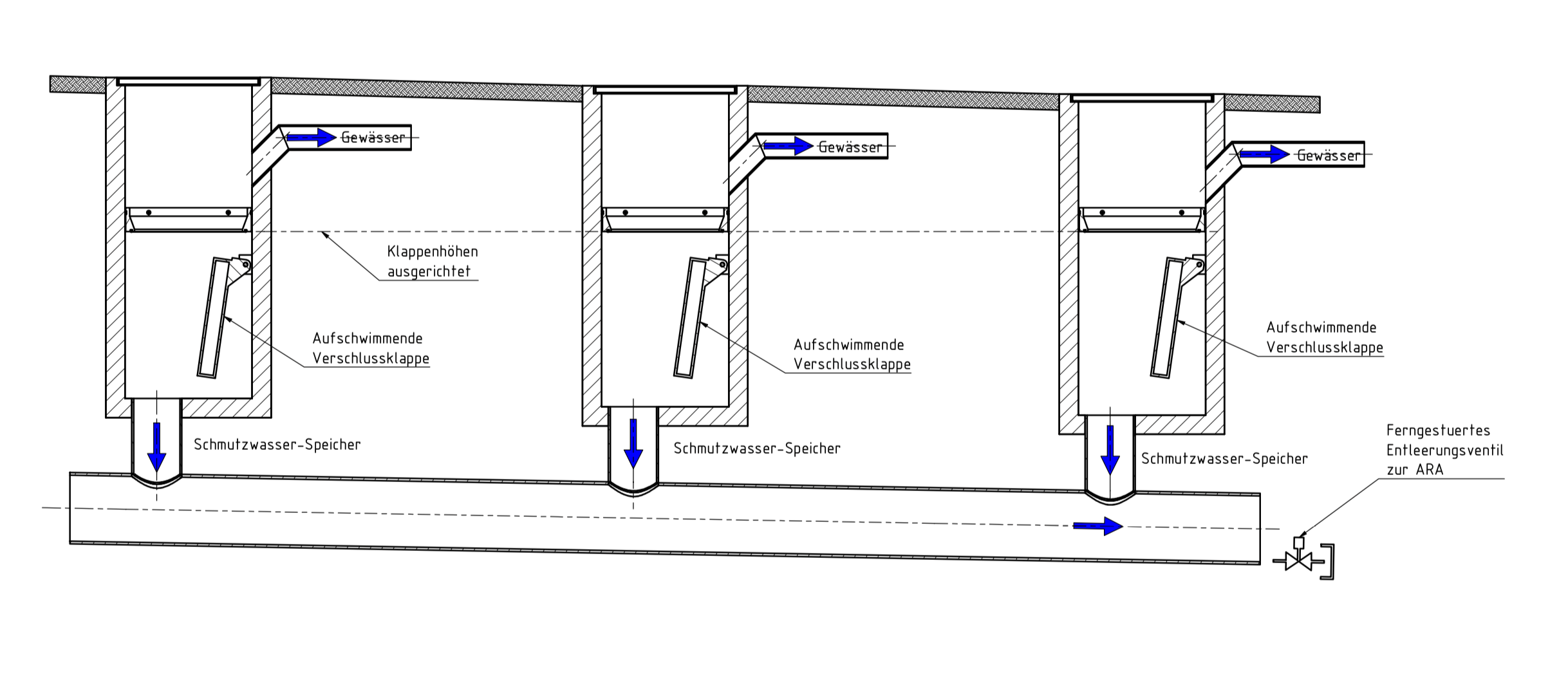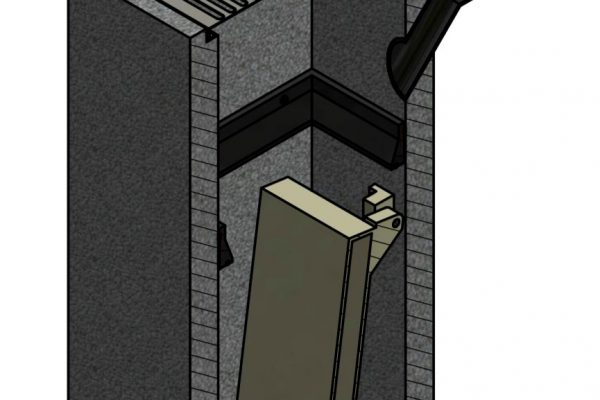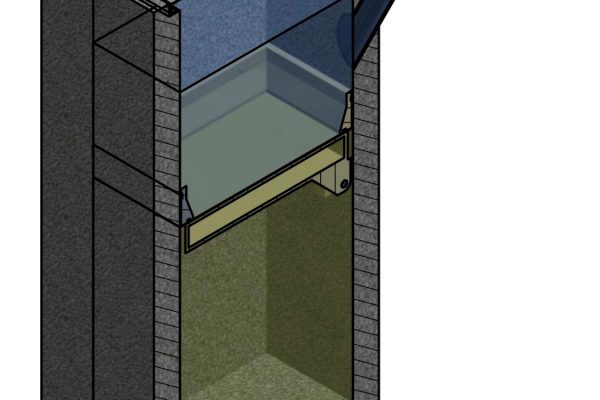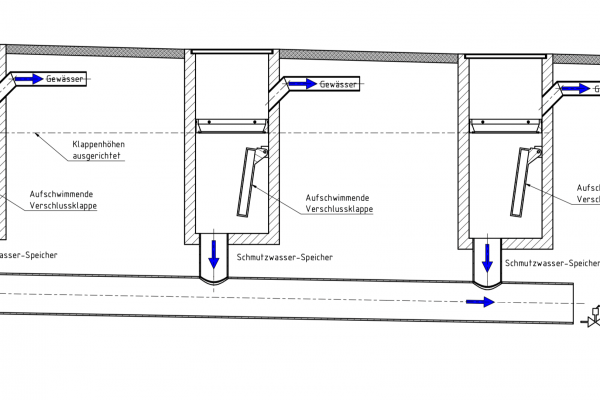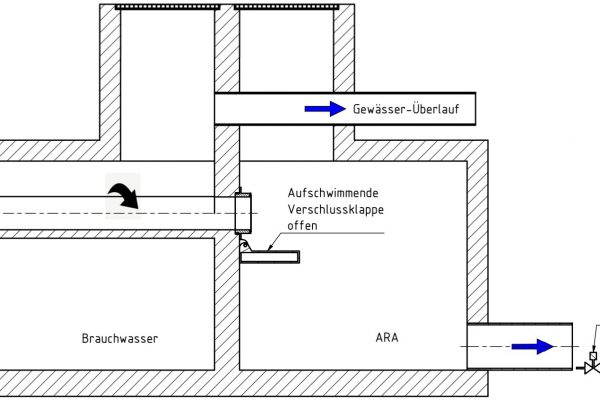The INKA-controlled road drainage system allows contaminated rainwater to be safely routed to the wastewater treatment plant, while uncontaminated rainwater is routed directly to the separate system/watercourse. The first rainwater that washes off the First-Flush is collected in a storage pipe under the road and retained until the combined sewer system has the hydraulic capacity to safely discharge the volumes to the wastewater treatment plant.
As soon as the storage pipe is filled, it is closed via floating Floating shut-off valves to prevent it from being washed away by mixing with rainwater flowing downstream. With the valve controlled by INKA, the storage pipe is then automatically emptied when the capacity is available in the sewer network and the wastewater treatment plant.
Dimensioning the storage line
The dimensioning of storage volumes for contaminated rainwater is sensibly carried out according to the principle of how long after the onset of rain the run-off water will be contaminated, or after what rain duration/quantity no more pollutant input is to be expected, and according to economic criteria. From a pragmatic point of view, the dimensioning could also be based on the rainwater volumes that would have reached the wastewater treatment plant in the existing/static system – as an improvement, the only objective would be to ensure that the additional quantities are not mixed with wastewater and discharged into the water.
An average, frequently occurring rain event has an intensity of 5mm/h, a precipitation of 15mm during 1h has a frequency of about once a year, a heavy rain of 30mm/h has a frequency of 20 years and a storm with 50mm/h has a frequency of >100 years. Studies show that tyre wear and heavy metals are washed away after approx. 5 mm of rainfall, depending on the intensity of the precipitation.
If these road runoff quantities are to be temporarily stored, using a 10m wide road as an example, a pipeline with a diameter of NW250 is needed along the road to retain 5mm of rain (5 litres/m2 x10m width = 50 litres per 1m road section). For the storage of 10mm of rain, a NW350 pipe is needed.
Selection and dimensioning of the INKA-controlled drain valve
The design should take into account the size of the storage tank and its relevance for the overall system, or how quickly the storage tank should be emptied in order not to overload the sewer system and wastewater treatment plant, and in return to keep/empty the storage tank again within a reasonable period of time for the next rainfall event. We will be glad to support you in carrying out an overall sewer network assessment.
Simple knife gate valves with electric or pneumatic actuators can be used, which are either completely opened or closed. Depending on the size of the storage tank, it may be advisable to use a discharge control system that can dynamically regulate the discharge volume. In addition, the storage tank should be equipped with a level measurement so that the filling and emptying process can be monitored. Furthermore, the system should be equipped with a modem that establishes a permanent data connection to the INKA control centre.
Integration of the system into existing drainage infrastructure
In many places there are already collector pipes under the roads with a dimensioning that can be used as storage. In order to be able to use this pipe even if it is somewhat undersized, additional volume can be created by appropriately dimensioning the drainage shafts.
The floating cover is available as a standard version with a concrete shaft, or can be customised for integration into existing shafts at STEBATEC.
Planning support
Please contact us so that we can assist you with the design and dimensioning.
Solution for squares, real estates and flat roofs
While, for example, 50mm of rain from a moderate storm can be easily retained on a flat roof, a pitched roof or a site with a floor area of 200m2 requires a rain barrel or similar with a volume for storing the polluted rainwater quantities (WWTP) of 1m3 for a medium event of 5mm, 6m3 for a heavy rain and 10m3 for a moderate storm – depending on the assumptions of how long after the onset of precipitation the rainwater runs off polluted. We support you in the selection of a suitable storage system, which takes into account the following “Smart City” criteria as required:
- Weather forecast-controlled retention volumes for flood protection
- Rainwater storage for cooling settlement areas
- Managed rainwater service water tanks for e.g. garden irrigation and toilet flushing
Figure 1; Rainwater tank of private or industrial properties with separate and centrally controlled WWTP storage, which is automatically emptied before the next rain event. The first rainfall is directed into the WWTP storage tank, which is closed purely mechanically via a floating flap after filling. Additional water quantities overflow into the service water tank or are fed to the watercourse via the overflow. The sketch is to be understood functionally – cost-effective solutions are available with prefabricated tanks made of lightweight material.
